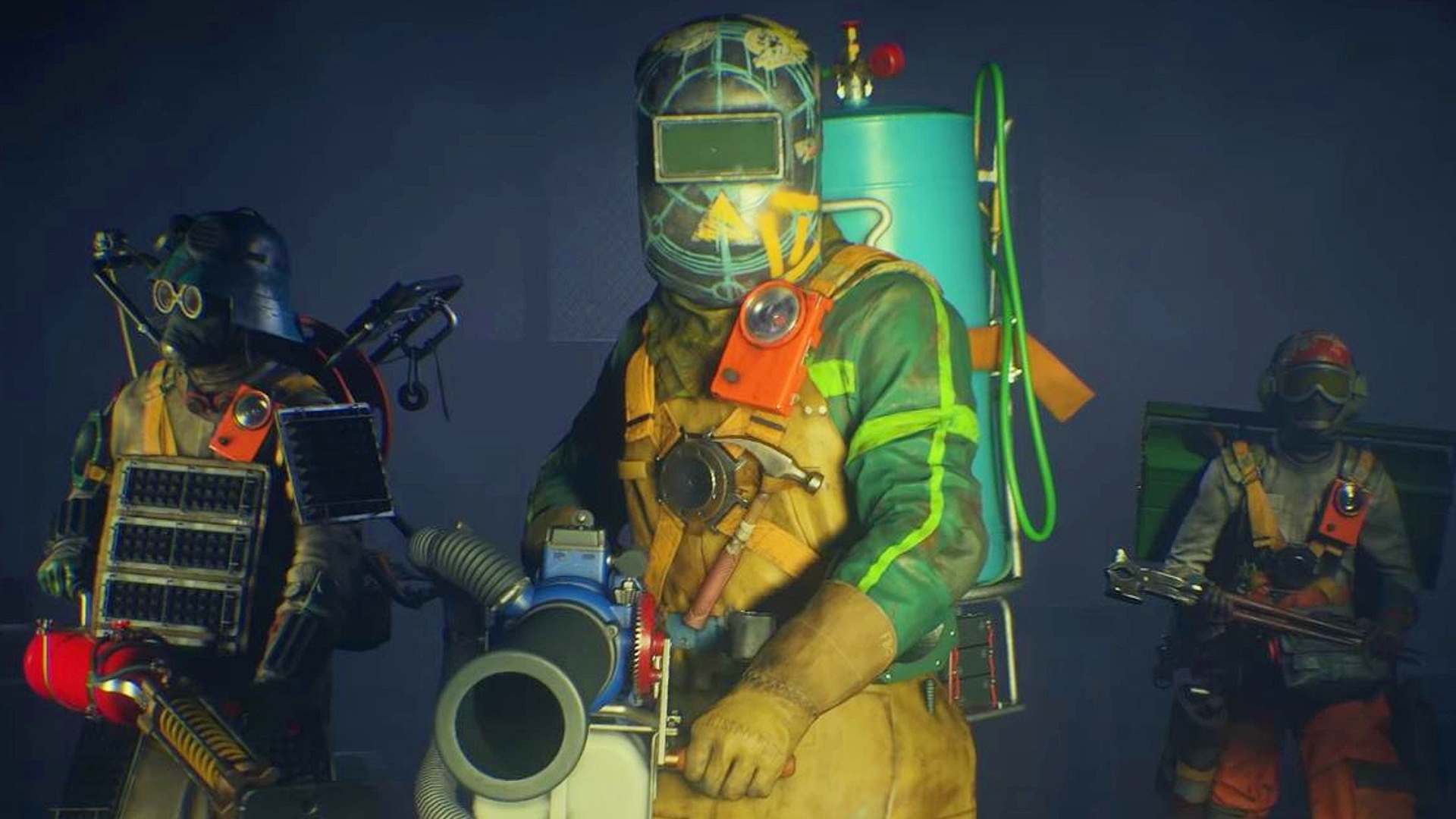In a world of 100-tier battle passes, seasonal events, IP crossovers, and still some paywalling of gameplay-altering features, FBC Firebreak feels like a breath of fresh air. While this isn’t Remedy’s first FPS (that honor goes to the oft-forgotten single-player campaigns for CrossfireX), it is the dev’s first multiplayer crack at the genre. Then there’s its strong anti-live-service stance, which sets it further apart from some of its contemporaries. During a recent visit to Remedy’s HQ in Finland, I spoke to FBC Firebreak’s game director, Mike Kayatta, about both of these talking points, as well as where the studio drew inspiration from, its post-launch plans, and solving problems with typical Remedy eccentricity.
Having gone hands-on with FBC Firebreak myself, I was impressed with how Remedy, a studio known for its zany, single-player campaigns, had approached the multiplayer FPS genre. It’s a co-op game that prides itself on approachability, flexibility, and delivering unexpected moments, and it’s doing a lot of things right. While Kayatta says he’s carefully studied what made co-op greats like Left 4 Dead 2, Payday, and Deep Rock Galactic so beloved, Firebreak is also partially inspired by games like Overcooked, Aliens Fireteam Elite, and, remarkably, Powerwash Simulator. FBC Firebreak‘s water-focused class, known as the Splash Kit, was “the first kit we ever tried to make,” but, despite Powerwash Simulator’s outward simplicity, it caused “months of problems” for Remedy.

“[Powerwash Simulator] was basically the original seed of inspiration for the style of game we wanted to make,” Kayatta tells me. “I was playing it and I was like: ‘Wow, why is it so fun to be doing this?’ I really had to think about why I was having fun. I didn’t understand it. And then I was like, ‘you know, it would be really wild if, as I was doing this, every once in a while a zombie ran at me, and I had to turn around and headshot it, and then go back to cleaning.’ And that led to a series of really weird conversations that ended up leading to [FBC Firebreak] in one way or the other.”
While a slightly unusual origin story seems apt for a studio with a catalog as surreal as Remedy’s, there’s no escaping that it’s trying to achieve two massive firsts: its own original FPS game, and a multiplayer one at that. Kayatta says that, even as a game director, he had some “healthy skepticism” in the early stages of development. “‘Are we really ready for this?'” he would ponder. But he says that Remedy devs picked things up “surprisingly fast,” despite the fact that Firebreak is “almost violating the things that typically drive us.”
Remedy’s ability to create moments that catch you off guard carries through to FBC Firebreak. Enemy Hiss piloting flying office chairs that’ll attack you from above. Healing water fountains that can turn into flamethrower turrets. A giant sticky note monster as a boss fight. Even when faced with gameplay hurdles, the team would endeavor to find creative, off-kilter ways to solve them. Kayatta tells me of a conundrum with one of the game’s Corrupted Items, cursed objects hidden within high-difficulty levels that must be found and destroyed to remove some brutal modifiers. In this case, it concerns a stapler, an object so small and unassuming that testers were initially struggling to find it.

“We recently had the idea that [the stapler] should kind of act like a fly that’s actually annoying you,” he recalls. “Like, you don’t even have to go looking for it. It’s kind of buzzing around you. And if you get a fly swatter and you start to come at it, it kind of sits still like you’re definitely going to hit it, and then at the last minute, bzzzt, off it goes.” A stapler behaving like an insect. Of course.
Even though it’s striving to be as quirky and surreal as the likes of Alan Wake and Control before it, it’s worth remembering that FBC Firebreak doesn’t necessarily have a triple-A scope, and it’ll launch with an (intentionally) modest amount of content.
There will be five Jobs, which Kayatta says should be considered more like game modes than just ‘levels.’ In terms of your loadouts, there’ll be three Kits to choose from and just a handful of weapons, but a fairly healthy lineup of upgrades and perks. In a world where more maps, more guns, more customization, more everything is often seen as the lifeblood of a multiplayer game’s long-term success, Remedy is looking at things through a different lens.
“We knew that replayability was going to be tough,” Kayatta says. “Everyone wants to solve replayability by just having a gazillion levels and pieces of content and 10,000 guns and all this other stuff. And that’s fantastic, but that’s way out of our capacity to produce right now. So instead we said, ‘ok, if we’re going to have a limited selection of content, we really need to make sure that this content is a machine that can produce its own emergent fun.'”

From my brief experience with the game, I think Remedy’s on track to achieve that. Firebreak’s strongest asset locker is arguably its elemental sandbox, where all sorts of player statuses and environmental effects can be created or neutralized through moment-to-moment actions. The breeze generated by using a zipline can blow out flames if you’re on fire, for example. This aspect alone already created a few of the surprising, emergent moments Kayatta speaks of during my three hours with Firebreak. In trying to avoid the usual “skepticism” that players feel when faced with a highly monetized live service game, the tough task of both attracting and retaining players falls solely on the shoulders of the gameplay. It’s a commendable approach, and Kayatta says it was “refreshing” that Remedy had no qualms with it either.
As for what comes post-launch, the team has been pretty tight-lipped up until now. While Kayatta admits that future plans are still very fluid and dependent on Firebreak’s reception and what its players ask for, there are a couple of things he reveals to me and commits to.
“We are planning to release two more jobs this year, which will increase that content by 40% by the end of the year, which I’m very excited about. We are also hard at work on stuff we’re not quite ready to talk about, but that’s because we’re still making decisions on it. But basically, we’re looking at late-game player systems, things that bring even more interest and replayability into the jobs that we already have – all of that will be coming out this year as well.”
FBC Firebreak launches on Tuesday, June 17. If you can’t wait until then, here are some other excellent multiplayer games for you to try. Or, you know, go and play Control – it’s one of the best single-player games around.
Source link
FBC: Firebreak,FPS



Average Rating